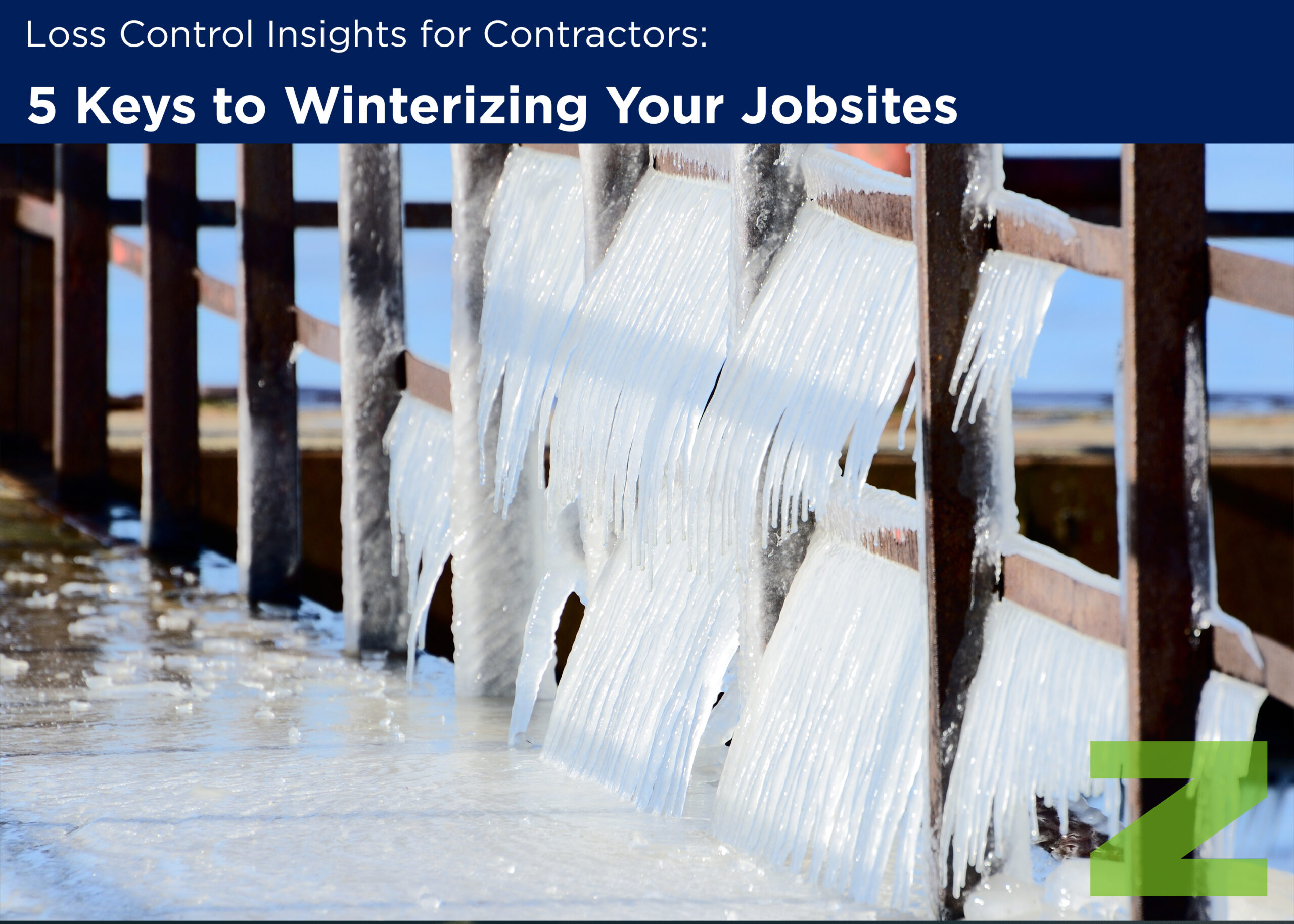There was a time when the arrival of winter meant the end of building season in many parts of the country, but technological innovations, such as ground thaw machines and more effective cold-weather protection, have allowed many trades to continue working year-round despite the freezing weather and snow. To minimize interruptions, injuries and property damage this winter, don’t forget to include these elements in your seasonal planning.
Prevent Unexpected Slips and Falls
During cold weather, your access to projects might be limited to a single entrance in the hopes of keeping the building’s envelope as tight as possible. Forcing everyone to use a single route concentrates all the rain, snow and mud into one high-traffic area. Control this often-ignored slippery area using a combined strategy of mats, snow removal and regular cleaning. And don’t forget to address the slippery snowpack that occurs outside this well-traveled entrance. Ice melt can damage new concrete, so apply sand or poultry grit as a traction aid when ice can’t be removed manually.
Another unexpected fall hazard occurs when snow accumulation threatens to overload floor slabs or roofs and unqualified workers attempt to shovel/push it off these very slippery, elevated surfaces. It’s best if you don’t attempt to remove this snow yourself—instead, hire a professional who is experienced with this niche type of snow removal.
Help Employees Stay Warm
If your team will be working outdoors or in unheated buildings, you can help them stay warm by encouraging them to wear layers and allowing composite-toed footwear, which is both lighter and warmer, instead of requiring steel-toed boots. Remind them of any warming areas that might be available, even if it’s just the cab of a warm truck or the job trailer. Heat packs for pockets or battery-powered jackets are also nice options for especially cold days.
If you’re heating your space with portable heaters, read up on the hazards of carbon monoxide to make sure you’re using them safely.
Prep Vehicles and Drivers for Winter
Review winter driving safety tips with employees before the first snow hits and prepare your fleet by checking and replacing tires, fluids and batteries if needed. Construction equipment manufacturers may also have suggestions for preparing your equipment for winter. Drivers pulling trailers need to be extra vigilant in winter weather. Carefully inspect connections before hitting the road and be cautious with speed and following distance—it takes longer to stop on wet or icy roads. If your work vehicles spend a lot of time on the road or cover long distances to get to jobsites, it’s also a good idea to stock them with emergency kits.
Monitor Site Conditions
This time of year, working conditions can vary drastically from one day to the next depending on the temperature and amount of precipitation. Keep an eye on the weather forecast and plan your jobs accordingly, checking the worksite each day to see what hazards might have come up overnight. Decide in advance how you’ll handle major weather events and communicate with employees so they know what to expect. Knowing what kind of weather is on the way can also help you plan installations that might be sensitive to variations in temperature or humidity.
If wet sprinklers are installed in your project, monitor temperatures to avoid freezing. If permitted by the local municipality, antifreeze can be added to the system by a fire sprinkler professional in some circumstances.
The freeze-thaw cycle can also create ever-changing hazards on your jobsite. When temperatures are warm and the ground thaws, heavy equipment leaves large ruts or tracks in the mud. These depressions and ridges then freeze when temps drop overnight, creating changes in elevation that are dangerous for both pedestrians and vehicles. Keep an eye out for these formations, and use grading as needed to maintain a relatively even surface.
Scaffolds should be inspected before use no matter the weather, but late fall and early spring present extra challenges. As temperatures rise and fall, large area scaffolds or hydro-mobile scaffolds can experience shifting at the base plates and foundations. Inspect these regularly to ensure nothing has shifted during freezing or thawing conditions.
Plan Your Snow Placement
If you work in an area where snow is expected, think about snow removal before winter arrives. Will you be removing the snow yourself, or coordinating with other players on the project? If plowed snow will stay onsite, choose a location where meltwater won’t cause an issue. For small projects, snow may need to be hauled away. It’s also a good idea to mark paths of travel and equipment locations when significant snowfall is expected.





